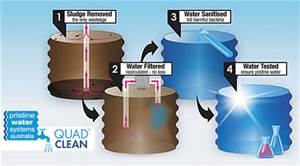
Over 4500 children die every day as a result of polluted water. WASH (Water Sanitation and Hygiene) in schools and WINS (Wash in School) in India are direct programs focused on water and sanitation in schools. Tragically, diseases caused by water and sanitation are the leading cause of death and chronic diseases that seriously impact health and performance in schools. These diseases ranging from diarrhea, worm infections, cholera, malaria, trachoma and schistosomiasis are debilitating and have a major impact on school attendance and education.
Toilets are being built, water supply is being arranged. But the most important part of these programs is behavior modification. Key areas for consideration are:
• What is the use of toilets, if they are locked and kids have no access to them?
• Toilets are built, but there is no access to regular water supply
• Toilets are so dark, dingy and dirty that kids are scared to use them.
• Water is available for washing hands after using the toilets. But no one thinks it is important
• Fathers feel toilets are meant only for the privacy of girls and women. So they all go outside. Boys imitate their fathers and it is really difficult to change their habits.
In the Indian model, hand washing is a key element in the process. Children do it together before the midday meal, provided by the government in schools. This is a social activity and even has musical jingles to reinforce the habit. This is a great place to start recycling water. Water from hand washing can be channeled to soil, which is the best medium to purify water. Even sewage can be purified by soil. So coming back to the hand washing water in schools, we should remember that bathing and washing of clothes uses 50%-60% of our daily use of water.
The purification process involves the removal of all organic matter from the water by soil bacteria. This water contains very little organic material. At the very least, this water can be used to recharge ground water. The process involves diverting water on to a specially prepared soil bed, planted with plants. These can be flowering plants like Canna Indica and Hedichium Coronarium (Ginger Lily), fruit plants like banana or vegetation like Colocasia esculenta (Hindi: Arvi; Tamil: Seppan) or Cyperus alterifolius (umbrella plant). These plants supply oxygen to the soil in their root zones. The soil bacteria break down the organic compounds in the grey water with the help of the oxygen and make the water clean. Earthworms present in the soil enhance the efficacy of this cleaning process. While several plants can be used for the process, Canna Indica has been preferred because its lush foliage with attractive red or yellow flowers add a beauty to the garden that other plants do not do. Cyperus also has its own charm and can be utilized , but it does not bear flowers.
They are all plants that can withstand heavy watering. The top of the soil bed should be level and not sloping. Water does not stagnate more than 45 minutes. This has been tried extensively in several high rise buildings in Chennai. Do consider it for your house or if you are leading WASH in schools or WINS, in the adopted school.
